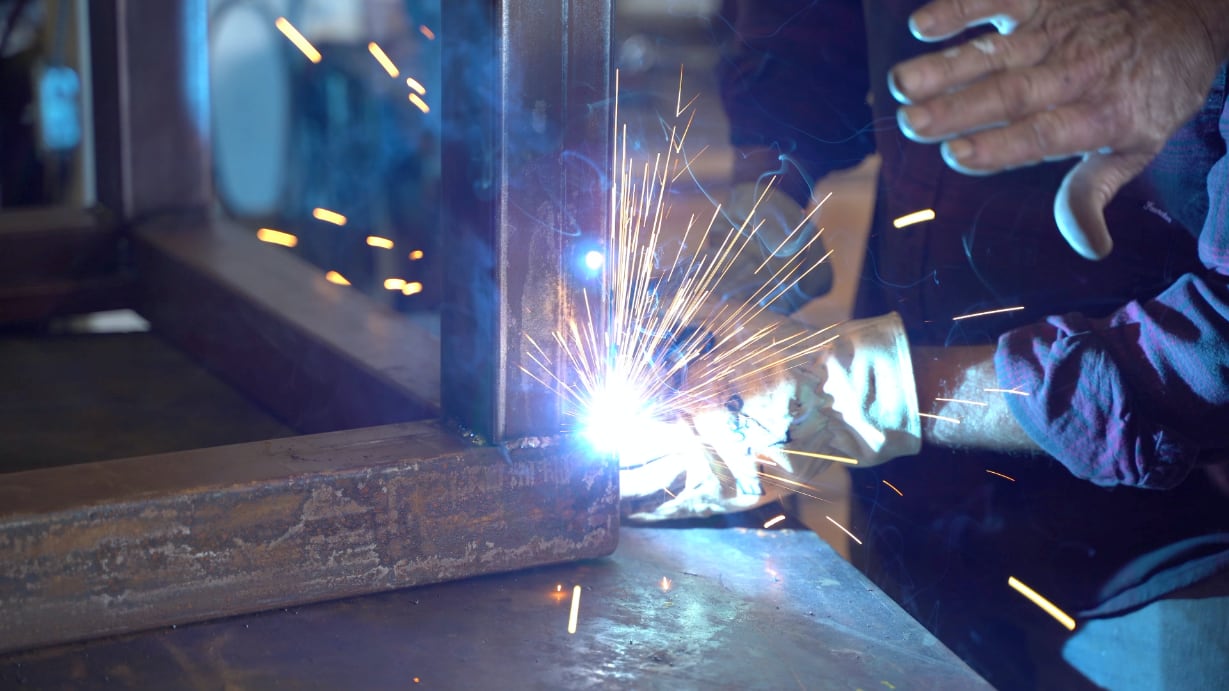The Welding Process
So you’ve made the decision to add a welder to your home shop or garage but are now facing the decision of what kind of machine to get. Should you get a MIG or TIG machine or one that does both? What’s the difference? It’s time for Welding 101 – The Welding Process!
To answer these questions, we need to understand the type of welding or ‘process’ a diy’r (or pro) would typically use at home.
Each has strengths and weaknesses as well as varying degree’s of difficulty for the beginner. All will require safety equipment as well as what we call ‘consumables’ (welding wire, electrodes, shielding gas) used during the process.
What does it mean to 'Weld'?
What are we actually doing when welding? All the processes are looking to achieve the same result. Fusion. We’re fusing two similar materials using high heat to literally melt them together.
To fully form a welded ‘joint’, filler material is added to the molten puddle (the weld puddle) as well. Upon cooling, the welded joint is typically as strong or stronger than the base materials.
A fillet weld gauge can be used to check that your welds meet your necessary requirements.
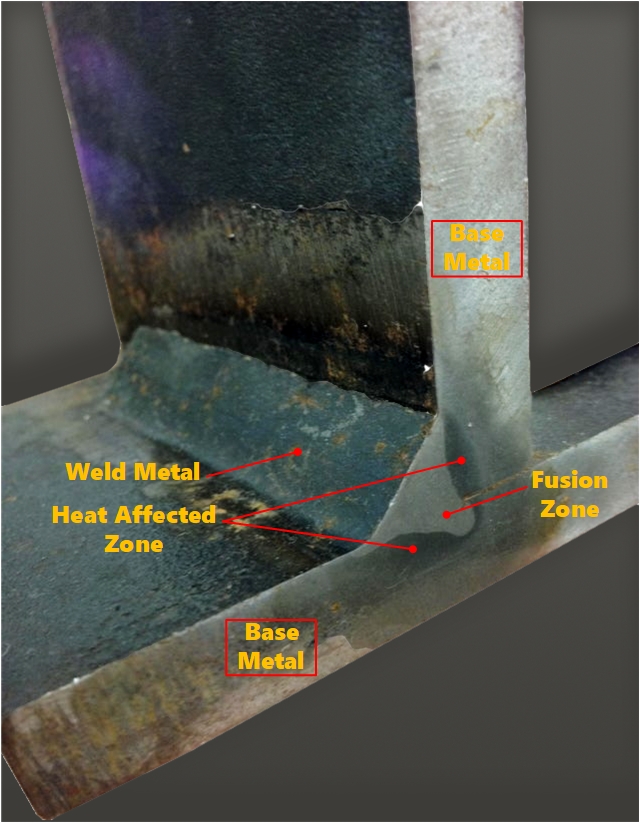
Let’s briefly examine each process and go over their benefits and weaknesses.
Stick Welding (Shielded Metal Arc Welding)
Stick welding (SMAW) requires only a welding machine (stick welder), a grounding clamp and a flux covered electrode held by a ‘stinger’. An electric current is used to form an electric arc between the electrode and the materials to be joined. During the process, the core or wire will melt into the weld pool while the flux simultaneously creates a gas shield over the weld. Shielding is critical to protect the weld from oxygen, water vapor and other contaminants.
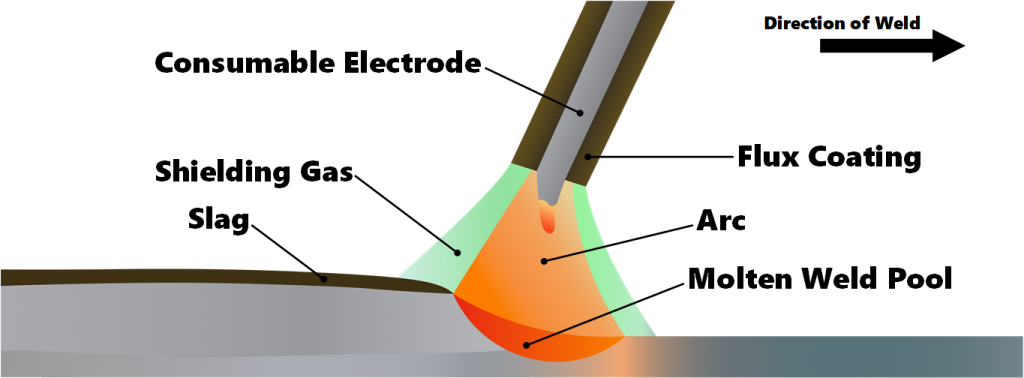
While the process sounds deceptively simple on paper, having the fewest ‘moving parts’, it can be tricky for the beginner. It’s more alike to learning to drive on the family Suburban rather than your mom’s Honda. There are however several benefits to learning and using the process.
Suitable materials:
- Carbon Steel
- Stainless Steel
- Nickel based alloys
- Chrome
- Aluminum (Difficult)
Advantages:
- No separate shielding gas required
- Works well outdoors and in windy conditions
- High portability
- Minimal joint prep (no need to remove mill scale or rust)
Disadvantages:
- More skill and practice required
- Products slag and spatter
- Slower process
MIG Welding (Gas Metal Arc Welding)
MIG welding or (GMAW), is a process in which an electric arc forms between a wire electrode and the material to be welded. As in other types of welding, a ground clamp is also attached to the work piece in order to complete the circuit. The wire itself is motor feed automatically from a spool through a hose and out a MIG gun as the trigger is depressed. An inert shielding gas (usually Argon, CO2 or a mix of the two) is also simultaneously fed through the hose via a nozzle in the gun to protect the weld. Alternatively, flux-cored wire can be used which removes the need for dedicated shielding gas. It’s a bit more sophisticated and complex than other methods as far as the components and setup.
The complexity on the back end however is what makes this process the easiest to learn as well as the most productive. MIG welding machines are a great way to get started in welding.
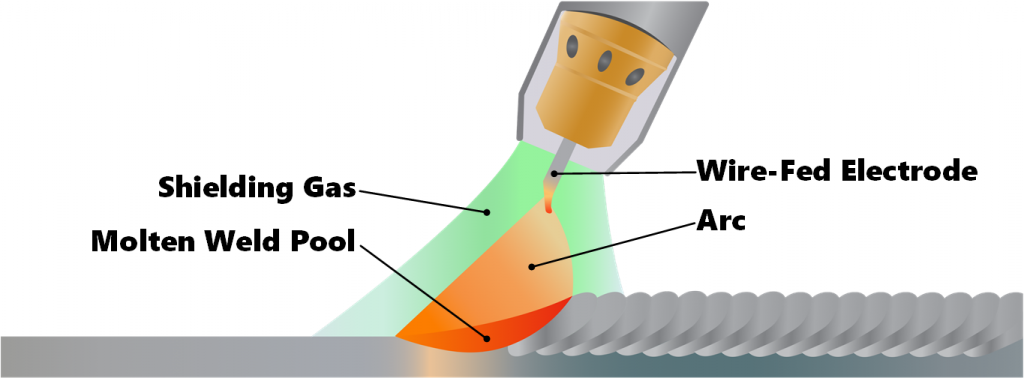
You’ll find MIG welding used frequently in metal and pipe fabrication shops due to its speed and production capability. It’s also a favorite of the automotive industry as its well suited for welding thin metals.
Suitable materials:
- Carbon Steel
- Stainless Steel
- Nickel based alloys
- Magnesium alloys
- Chrome
- Aluminum
Advantages:
- Easy to learn
- Wide range of metals can be welded
- More welding positions
- Fast process
- Less spatter
Disadvantages:
- Complicated setup
- Low portability
- More joint prep (metals and grounding point need to be cleaned)
- Not wind friendly
- Some additional consumable costs
TIG (Gas Tungsten Arc Welding)
TIG welding or (GTAW) is a process by which an electrical arc is created between a non-consumable tungsten electrode and the work piece. Similarly to MIG welding, an inert gas (usually argon) is also supplied via a nozzle in the torch head called the collet body. A grounding clamp is also attached to the materials to be welded. Filler material in introduced into the weld pool via the operator’s free hand. Many machines also offer amperage control through a foot pedal.
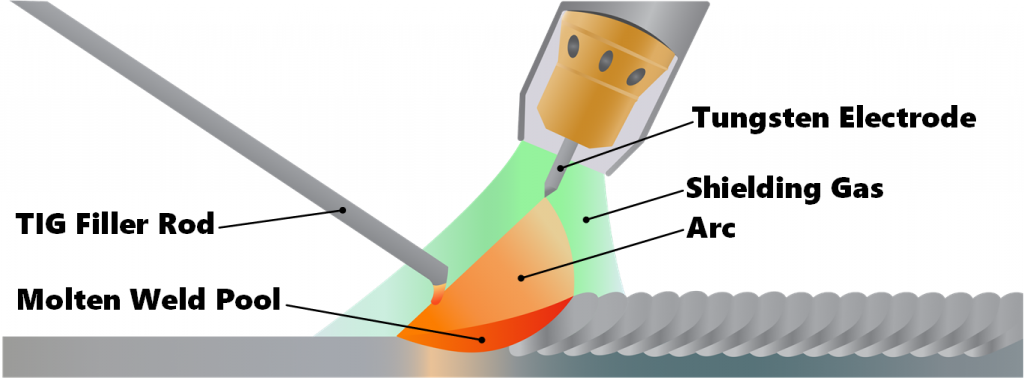
Very difficult to master, TIG welding requires considerably more skill than other processes but also produces the most aesthetically looking welds. Well suited for high precision or small welds, TIG offers precise heat control and can be used on a wide variety of materials. Often used in demanding applications in aerospace, aviation and motorsports.
Suitable materials:
- Carbon Steel
- Stainless Steel
- Nickel based alloys
- Magnesium alloys
- Cobalt alloys
- Copper alloys
- Titanium
- Aluminum
Advantages:
- High quality welds
- Wide range of metals can be welded
- Good for precise welds
- Less smoke and fumes
- No spatter
Disadvantages:
- High skill demands
- More joint prep
- Slower process
Conclusion
So which process and type of machine do you choose? While much of that will depend on your intended use, materials, etc, even for occasional welding, every ‘weekend warrior’ and pro alike needs a good MIG machine. With its flexibility and ease of use, it’s also the best process for the ‘single’ welder garage or workshop.
And with budget models starting at $150.00, there really is a MIG machine out there for everyone.
For those who want the best of both worlds (or can’t justify a dedicated TIG welder), many of the new machines on the market have some multi-process capability as well.
And what about a stick welder? Well if you need portability or a backup machine, having one around certainly won’t hurt. Just remember to practice!
